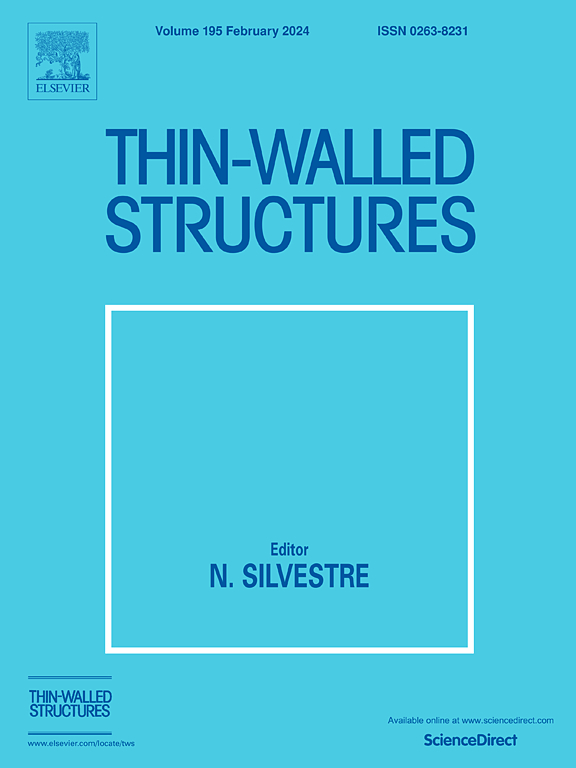Parametric study of a cold-formed steel profile employed in composite ribbed slabs
IF 6.6
1区 工程技术
Q1 ENGINEERING, CIVIL
引用次数: 0
Abstract
Structural systems comprised by prefabricated flooring systems and/or cold-formed steel members are frequently employed in the construction industry due to their versatility, high strength-to-weight ratio, ease of prefabrication, transportation and assembly on site. The unification of these structural systems motivated the creation of composite ribbed slabs, which were defined in this research as ribbed floor systems in which cold-formed steel members are used as joists, and the space between them is filled with inert elements, so called Trelifácil® solution. The focus of this research is to develop parametric studies to examine the flexural capacity and stiffness of the cold-formed profile used in the Trelifácil® solution. A finite element model using ANSYS® 2020R1 was developed and validated with experimental tests to predict the flexural behaviour of the Trelifácil® solution and perform such analysis. Additionally, a finite element model for the entire configuration of the Trelifácil® solution is developed to study the interaction between the trussed reinforcement and the cold-formed steel member.
复合肋板冷弯型钢的参数化研究
由预制地板系统和/或冷弯型钢构件组成的结构系统由于其多功能性、高强度重量比、易于预制、运输和现场组装而经常用于建筑行业。这些结构系统的统一激发了复合肋板的创造,在这项研究中,它被定义为肋地板系统,其中冷弯型钢构件用作托梁,它们之间的空间充满了惰性元素,即Trelifácil®解决方案。本研究的重点是开发参数研究,以检查Trelifácil®解决方案中使用的冷成型型材的抗弯能力和刚度。利用ANSYS®2020R1开发了一个有限元模型,并通过实验测试进行了验证,以预测Trelifácil®解决方案的弯曲行为并进行此类分析。此外,开发了Trelifácil®解决方案的整个配置的有限元模型,以研究桁架钢筋和冷弯型钢构件之间的相互作用。
本文章由计算机程序翻译,如有差异,请以英文原文为准。
求助全文
约1分钟内获得全文
求助全文
来源期刊

Thin-Walled Structures
工程技术-工程:土木
CiteScore
9.60
自引率
20.30%
发文量
801
审稿时长
66 days
期刊介绍:
Thin-walled structures comprises an important and growing proportion of engineering construction with areas of application becoming increasingly diverse, ranging from aircraft, bridges, ships and oil rigs to storage vessels, industrial buildings and warehouses.
Many factors, including cost and weight economy, new materials and processes and the growth of powerful methods of analysis have contributed to this growth, and led to the need for a journal which concentrates specifically on structures in which problems arise due to the thinness of the walls. This field includes cold– formed sections, plate and shell structures, reinforced plastics structures and aluminium structures, and is of importance in many branches of engineering.
The primary criterion for consideration of papers in Thin–Walled Structures is that they must be concerned with thin–walled structures or the basic problems inherent in thin–walled structures. Provided this criterion is satisfied no restriction is placed on the type of construction, material or field of application. Papers on theory, experiment, design, etc., are published and it is expected that many papers will contain aspects of all three.
 求助内容:
求助内容: 应助结果提醒方式:
应助结果提醒方式:


